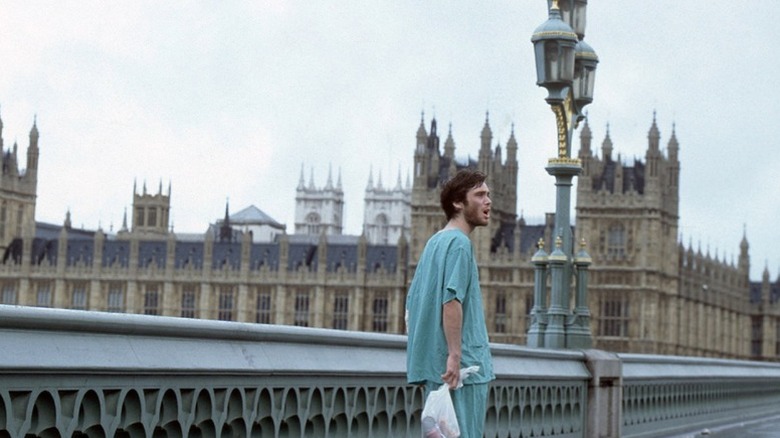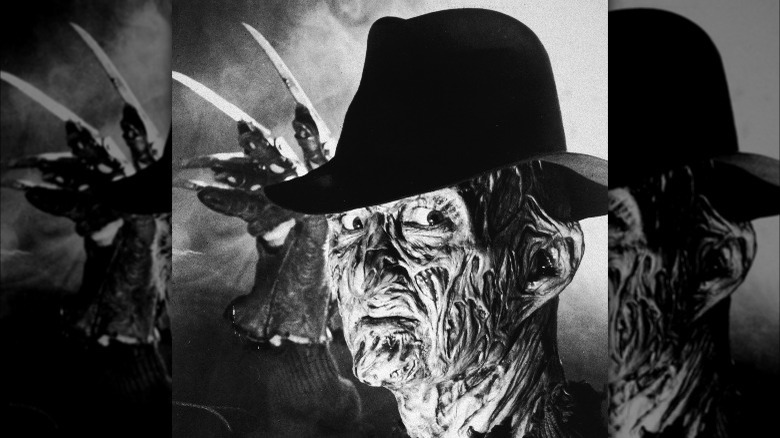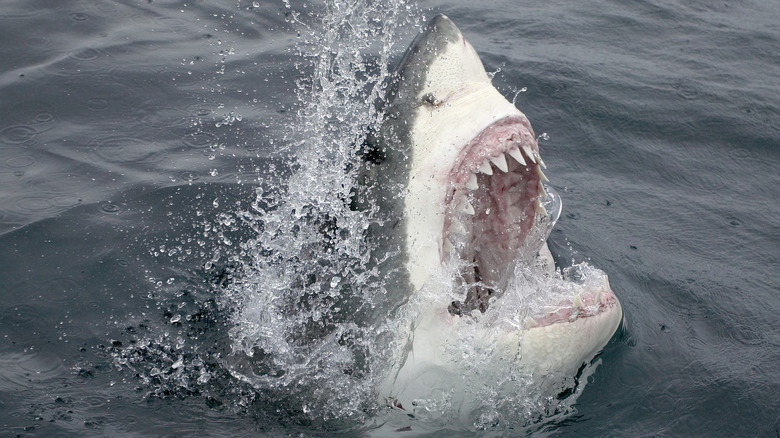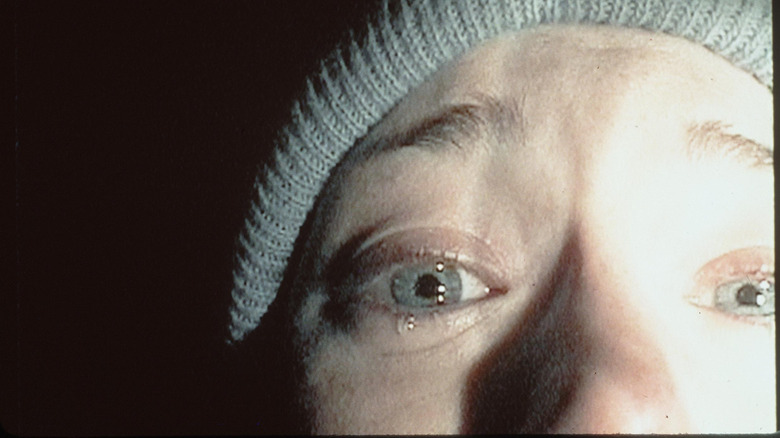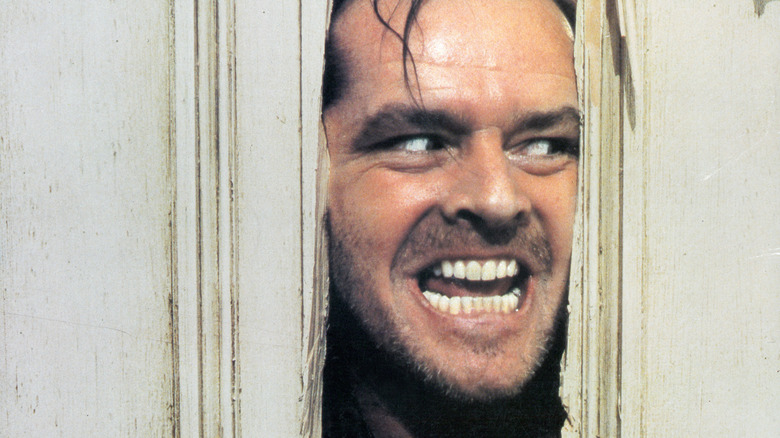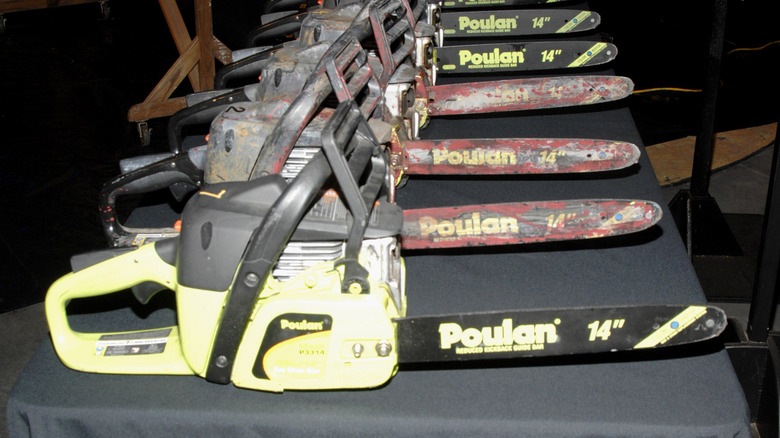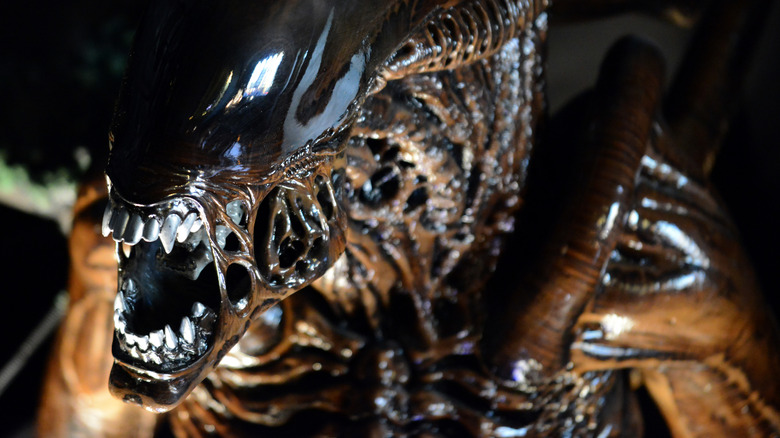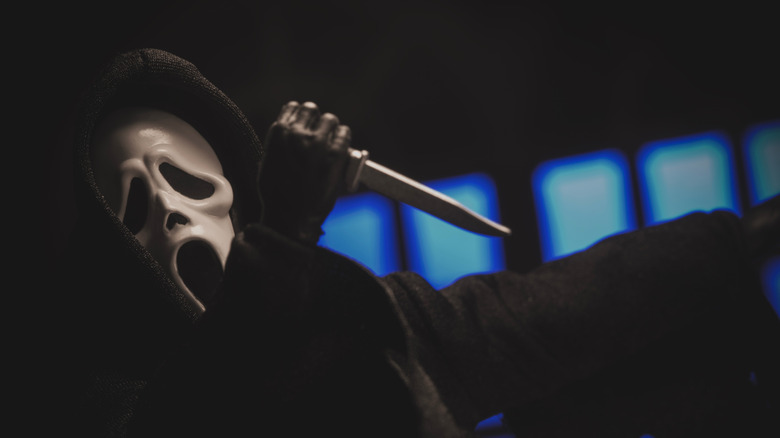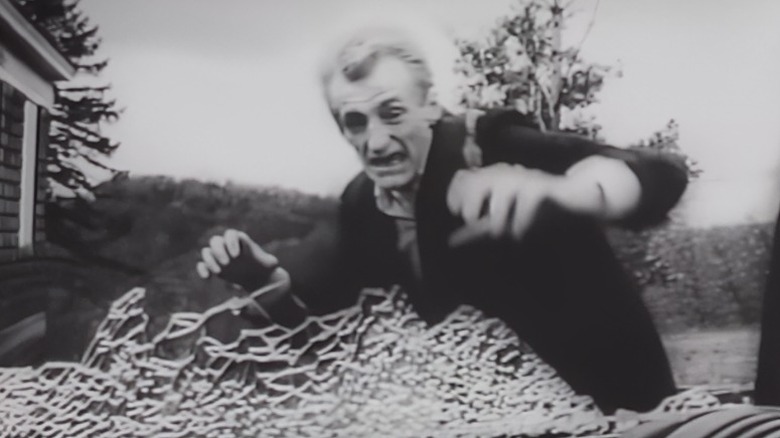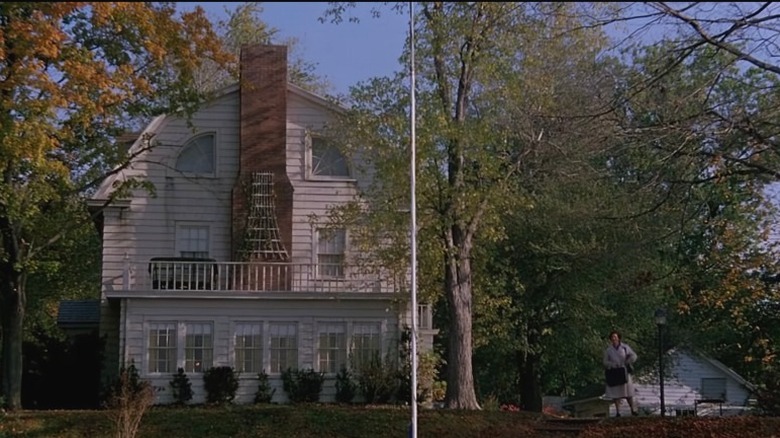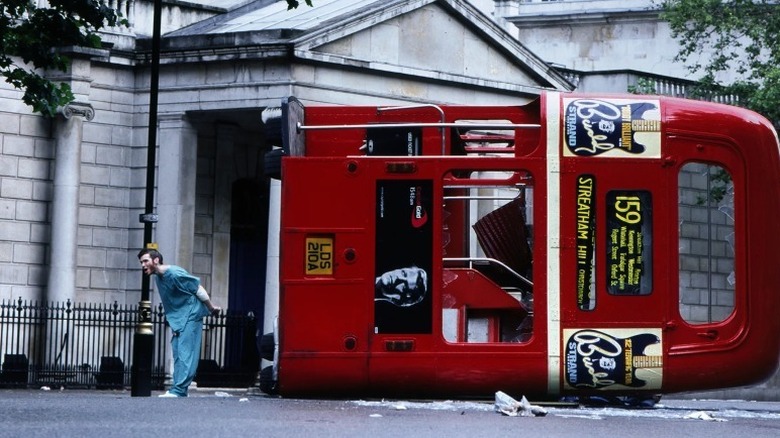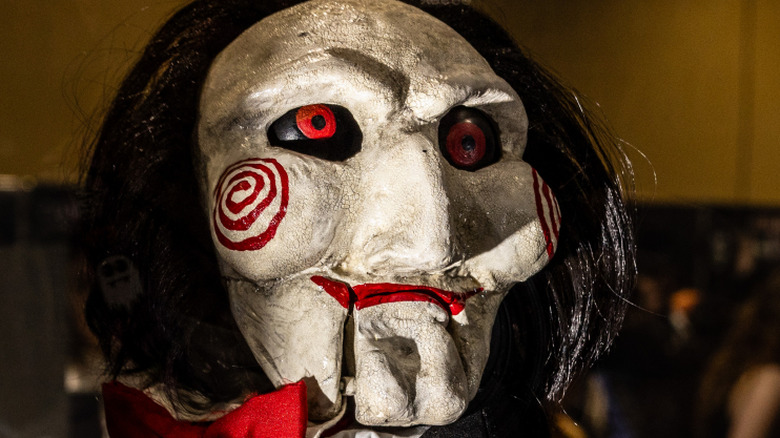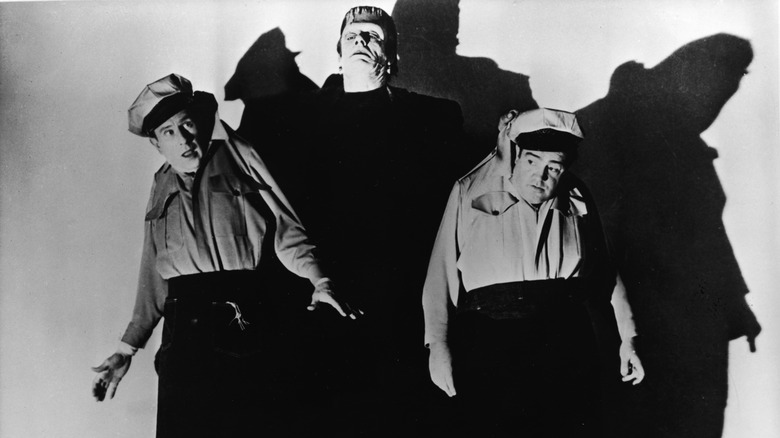Movies That Redefined The Horror Movie Genre
The horror genre has evolved over the decades, taking newer and more terrifying shapes. Some of these changes happen slowly, but occasionally a single movie rocks the foundation of horror to such a degree, the genre is never the same. Here are some of the most influential movies that redefined the horror movie genre ... and our nightmares.
A Nightmare on Elm Street
Before "A Nightmare on Elm Street," victims in horror movies either met a bloody death at the hands of a mentally unstable human or were tormented by some kind of ghost or creature. Then came "A Nightmare on Elm Street," a film that successfully blurred the lines between reality and fantasy, creating a teen slasher with a supernatural distinction, a first of its kind. That's right, this wasn't always a thing in horror! What makes this concept so genius is that, since Freddy played an otherworldly role in the film, it left room for producers and writers to bring him back for sequels, to wreak havoc on teens in a way that was believable to the storyline. Well, believable for a while, anyway.
Other franchises attempted the same supernatural slant, but they just ended up creating a bunch of crazy guys with super-strength who never seem to die, no matter how many times you shoot them. It really wasn't until "Child's Play" stuck the soul of a serial killer into a doll's body that another film successfully blurred the lines between reality and the supernatural. Ultimately, the knife-fingered man of your nightmares went on to become an icon in the horror world, even though what he does isn't easy for many others to pull off nearly as well.
Jaws
Some of you might be thinking "Jaws" isn't really a true horror film. To that we say: go watch the beginning and come back. That is one of the most terrifying sequences set to film. Hell, the whole movie is horrifying! The creature is basically unstoppable and, with no rhyme or reason, starts killing everyone in its path.
"Jaws" basically created an entire genre: giant monsters eating people. If it weren't for "Jaws," that genre either wouldn't exist or, at the very least wouldn't be nearly as good and vibrant as it is today. While it wasn't the first film to do so, the way that "Jaws" portrayed the terrifying creature — almost always in shadows, seeming more a malevolent force than anything that man could best — would influence movies for ... well, ever.
After "Jaws," came dozens of remakes that were basically just "Jaws But X Animal." A bunch of them were amazingly bad ("Anaconda," anyone?), some were amazingly great ("Lake Placid"), some of them were shown on SyFy (too many to mention), and some of them were even made by Spielberg ("Jurassic Park"). But none would've existed if not for that pesky, man-eating shark.
The Blair Witch Project
When "The Blair Witch Project" hit theaters in 1999, many moviegoers didn't know what to make of the horrifyingly realistic film. The movie's shaky camera work, documentary-style production, and nose dripping close-ups were something no one had seen before, causing many to leave theaters thinking the footage was real. Staff writer for the Washington Post, Lloyd Rose, compared the aftershock of this movie to the apocryphal "War of the Worlds" radio panic in 1938 (only real this time).
After "Blair Witch" established what we now call "found-footage" films, many aspiring filmmakers applied the idea to their own projects. Between the appeal of low-quality imagery, and the relatively low budget needed for filming, newcomers proved that practically anyone could make a movie using this technique. As technology evolves so does this genre – smartphones, GoPros, and security cameras allow found-footage to provide different viewpoints, like what we see in the "Paranormal Activity" franchise and "Cloverfield." Even the last season of "American Horror Story" used found footage, setting up a house with hidden cameras and locking people up just a smartphone so they could record their own murders. Sorry, Kardashian haters — don't expect them to gank this concept for the next season of their show.
The Shining
Without a knife-wielding serial killer on the loose, "The Shining" proves that horror movies don't need quick scares and dark corners to make their way into our nightmares. Considered to be a psychological horror film, "The Shining" showed that you didn't need cheap scare tactics and obnoxious music to make the audience jump. On the contrary, hotel scenes were kept well-lit, and the ghosts were never realized as actual spirits but instead could be perceived as hallucinations caused by Jack Torrance's cabin fever and creeping insanity.
Using film sets, camera angles, and intelligent dialogue, "The Shining" redefined what it meant to be a horror movie. Classic Horror reports that director Stanley Kubrick was "particularly fascinated with humans' relationship to space," in this case the space of a huge hotel. The hotel's creepy sense of isolation is emphasized by the shockingly small number of scenes all three members of Jack's family are in together. Also, unlike horror movies before "The Shining," most of what could be classified as the scary stuff doesn't occur until the end of the movie, while the rest is portrayed in a space blurred between reality and fantasy, which keeps the audience guessing about what's real and what isn't.
Texas Chain Saw Massacre
"Texas Chain Saw Massacre" is notable for being the only realistic depiction of what it's like to live in Texas: horror, horror, horror, and then death. Nah, we're just kidding, Texas is fine. But some parts of it are terrifying — those big empty wastes where there's nothing around but fields, and then a small house off in the distance. Its on roads like these that the heroes of this film wander down, finding horror as they pick up a stray hitchhiker, only to realize he's dangerously mad ... and he's the nicest of his family.
"Texas Chain Saw" was amazing for its time. It was one of the most brutal films ever made when it came out. It defined what slashers would come to be — brutal, horrifying, and sometimes just a tiny bit inspired by a real-life case. Despite a slew of successors, none have quite come close to matching the brutal horror let loose by a man named Leatherface who, oh yeah, is wearing a mask made out of people's skin. The first time you see him slaughter and the body twitches in death ... that's one of the most horrifying things you'll ever see. If it weren't for this, the entire landscape of modern cinema would be different.
Alien
In space, no one can hear you scream. Know who thought of that before this movie burst into reality and impregnated us with its horror? No one, apparently!
There had been sci-fi movies with giant monsters before, but never a straight-up horror film about them. Then, "Alien" came along. Not only did it bring about a renewal in body horror across all science fiction, but it also created the idea of science-fiction horror films. If it weren't for this film, we would never have gotten films like "Event Horizon" or "Pandorum." But, being the excellent film it is, "Alien" wasn't fine just creating a genre — it also had to redefine how horror films operated, period. Before this, final women — women who lasted until the end of the movie and occasionally won — were already a thing. But with "Alien" (and "Aliens," and so on), came a bold new era of women who were as fearsome as the monsters themselves, changing how horror film protagonists worked forever after.
Scream
"Scream" brought horror fans back into theaters, after many had grown tired of watching the seemingly never-ending sequels of '80s slasher flicks, wondering just how many times Jason and Michael Myers could possibly die. "Scream" introduced a fresh take on the genre, completely changing the formula for teen horror films. Director Wes Craven made sure his characters were familiar with the tropes of such movies, knowledge that would be deemed useful when their phones rang. In short, "Scream" all but invented the self-referential, self-aware horror movie.
Even the killer took time out of his bloody rampage to make horror movie references, as he asks his victims trivia in order to decide whether they live or die. They never "win," of course. But in order to stay alive, the teens think they can use what they know from slasher films, creating a set of rules to follow like: not having sex, not misusing drugs, and absolutely never saying, "I'll be right back!" Every character seems to know they're in a horror movie, creating a new genre called meta-horror. The technique was used in a ton of movies, like "Cabin In The Woods," "Shaun of the Dead," and "Behind the Mask: The Rise of Leslie Vernon." Craven proved that it only takes a single person to redefine a genre, but only he could do it more than once.
Paranormal Activity
"Paranormal Activity" is one of those movies you either love or hate. It was filmed with a handheld camera that almost anyone could afford, in someone's house, with almost no special effects. There's almost no plot, no professional actors, and no real big scares to be seen. It's either a pretty great film, or the worst film ever made, depending on who you talk to.
No matter what you think about it, though, there's one undeniable fact — it helped usher in a huge surge of found-footage horror movies. It wasn't the first, obviously, but with the success of "Paranormal" — a movie made for next to no money — it showed movie studios that people would gobble up found-footage, and so we did! "Cloverfield," "Rec," "As Above So Below," "The Visit," and even a new "Blair Witch"! Thanks "Paranormal Activity" — even if a whole lotta people thought you were boring, you gave us a ton of movies that aren't.
Night of the Living Dead
"Night of the Living Dead" is one of the best movies ever made, and it's completely free to watch, because George Romero didn't copyright it. Oopsie. It's not exactly his fault though — he wasn't an experienced filmmaker. The movie was his first, and it was made with basically cushion change.
Despite that, it became one of the most influential horror films ever made. Not only did it bring about a renaissance in independent film making, it introduced the world to a classic horror staple: the slow, sci-fi zombies. Before "Night of the Living Dead," most zombies were magically controlled beings, finding their roots in Western ideas of voodoo. However, "Night of the Living Dead" changed all of that. It introduced creatures that rose from the dead, not due to any magic, but because of science! While it's not explicitly said what exactly caused the creatures to rise, all of the theories concern NASA probes and viruses — things that exist in the real world, turning zombies from fantasy monsters to science-fiction horror.
The Amityville Horror
When "The Amityville Horror" was released in 1979, the world was familiar with the real-life murders that inspired the story, but was dying to know more details. The film gave them just that — whether the details were all true or not (this is Amityville, after all, which was almost certainly a hoax), it did enough to revolutionize the idea that a horror film could be based on real-life events.
While other horror films have certainly claimed to be based on true stories, like "Texas Chainsaw Massacre" and "A Nightmare on Elm Street," they're usually so loosely based, the film hardly deserves that subtitle. "The Amityville Horror," however, used news reports about the events, interviewed police who reported to the scene of the murders, and depicted the experiences of the Lutz family as close as they could during filming. The success of the movie inspired several other paranormal movies like "Poltergeist," and demonstrated how audiences are suckers for horror flicks based on a true story, or in this case, a "true story."
28 Days Later
"28 Days Later" did the most important thing any film ever did: it brought to global attention Cillian Murphy's jaw. Before "28 Days Later," horror movies had been using pretty much one type of zombie — the kind from "Night of the Living Dead." They were slow, had an ill-defined origin, and you couldn't actually beat them. Then "28 Days Later" came about, bringing with it the idea of an origin story for the zombies, and also introduced the idea of zombie-ism being an infection you could beat.
But more importantly? It gave us fast zombies. Before they'd all been shambling monsters, slowly decaying — then, with "28 Days Later," we got rage monsters out to devour all. And we were all the luckier for it, unless the fast zombies got us.
Saw/Hostel
Yeah, we're cheating and putting two movies together, but it's only because they came out so close together, trying to figure out which movie is more influential is a silly and pointless exercise.
Before "Saw" and "Hostel" came out, horror movies were very gore-filled, and very scary, but there was also a plot, and ideas. They were, you know, actual movies, not just celebrations of gore. It wasn't until "Saw" and "Hostel" came out that the idea of "torture porn" became an actual thing. It led to a slew of horror movies that don't care about anything except shock and awe — no plot, no point, nothing but blood, guts, gore, and torture. It's porn, but instead of sexy stuff, it's sadistic stuff, it's blood! If it weren't for these films, horror movies wouldn't be anywhere near as overtly brutal and graphic.
Abbott and Costello Meet Frankenstein
Abbott and Costello's comedies, while always pretty damn funny, eventually morphed into horror spoofs that reincarnated some of the studio's most notorious horror monsters. In their most famous movie, "Abbott and Costello Meet Frankenstein," they not only have to survive running into Frankenstein, but Dracula and Wolf Man as well. Far from what was considered scary at the time, the movie is said to be the first successful comedy-horror film, due to its combination of well-known monsters and the beloved screwball comedy duo.
Not only did "Abbott and Costello Meet Frankenstein" completely redefine how a horror movie can be written, it also paved the way for other types of horror comedies to be successful, such as dark comedies and horror parodies. As such, in 2011, the film was found to be "culturally, historically, or aesthetically significant" by the U.S. Library of Congress, and was inducted into the National Film Registry, where it will be preserved as part of American history forever. While most people would roll their eyes these days if this kind of slapstick humor ended up in a modern-day horror flick, without it we might not have the more modern horror-humor films we love, like "Shaun of the Dead," "Tucker & Dale vs. Evil," and "Scary Movie." And what kind of world would we be living in if those films didn't exist? Not a frightfully funny one, for sure.
